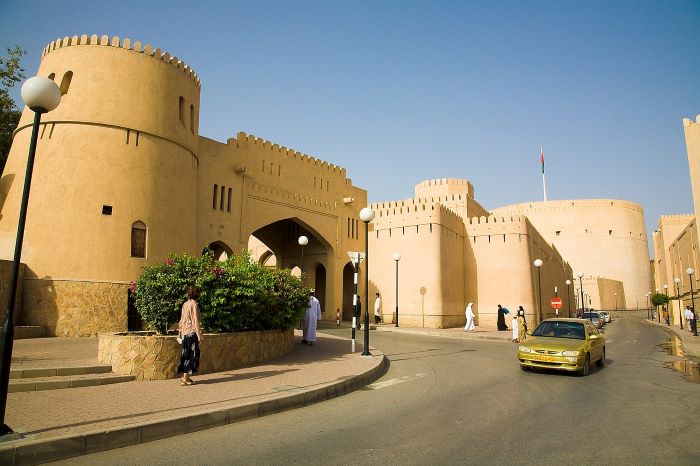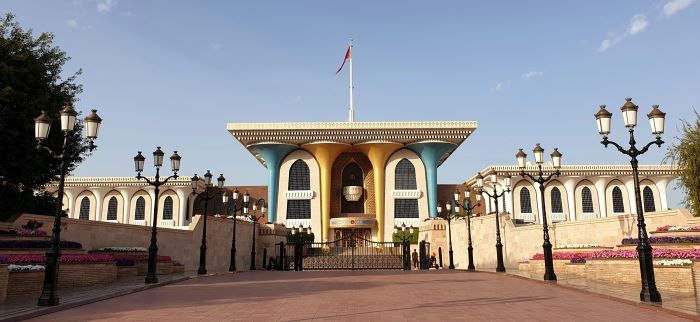Travel
Embrace the Myths and Traditions of Oman’s Past at These 10 Historic Landmarks

Oman, a country whose rich history is spoken through the sands of time, welcomes visitors to take a trip through it. With tall fortifications and archaeological treasures, the Sultanate’s ancient sites provide an enthralling look into a mythological, culturally rich, and architecturally spectacular past. Book your Oman Air tickets and experience 10 of the most important historical places in Oman, each of which narrates a different chapter of the country’s rich past.
Bilad Sur Castle
Our trip starts in the Arabian Sea’s blue seas, perched atop Bilad Sur Castle. This stronghold, which was once a barrier against invading tribes, is now a reminder of Oman’s strategic significance along old commercial routes. Climb its imposing turrets and picture soldiers keeping a careful eye on the horizon for ships that may be coming.
Nizwa Fort

Image Resource: en.wikipedia.org
We go inland and come to Nizwa Fort, a well-known representation of Oman’s architectural mastery. Although it isn’t yet a UNESCO World Heritage site, this fortification-turned-museum provides priceless historical information about the city. The enormous central tower of the fort, with its complex defences, says volumes about the inventiveness of Omani military architects.
Bahla Fort
UNESCO World Heritage site Bahla Fort whisks tourists to a realm where mythology and history coexist together. Constructed during the thirteenth century, this enormous building represents the height of Islamic construction in that era. Bahla’s already remarkable height gains intrigue from a local legend that claims it is the Omani origin of black magic. Its winding passageways may well make you feel as if centuries of magical beliefs are crowding in on you.
Birkat Al Mouz Ruins
The great fortifications of Oman are calmly contrasted with the Birkat Al Mouz Ruins. Tucked down in the base of the Hajar Mountains, this deserted settlement vividly depicts the Omani way of life. Investigate the collapsing mud-brick homes and be amazed by the clever falaj irrigation system, a UNESCO-listed example of ancient engineering.
Al Alam Palace

Image Resource: unsplash.com
The current monarchy of Oman is symbolised by the Al Alam Palace in Muscat. Though its spectacular façade is only visible from a distance, the palace’s modern Islamic architecture and vivid blue and gold columns provide an intriguing window into the country’s creative development.
Taqah Castle
Going south to the Dhofar area, Taqah Castle provides a window into the lifestyle of Oman’s coastal nobility. A wealth of objects from this 19th-century stronghold that has been converted into a museum vividly depicts Omani traditional culture. Every display, which includes everything from elaborate jewellery to antiquated weapons, narrates the rich maritime history of the area and its ties to the outside world.
Sumhuram Archaeological Park
Part of the Land of Frankincense, which is recognized by UNESCO, the ruins of Sumhuram take tourists back to the height of the incense business. Walking amid the worn stones, picture the busy port that was once here, its quays filled with priceless fragrant resins headed for far-off places.
Jabreen Castle
Of all the fortifications in Oman, Jabreen Castle is unique in emphasising education and culture. Constructed in the seventeenth century as a palace, talks of Islamic law, medicine, and astrology were used to fill its halls. A window into a golden era of Omani knowledge and craftsmanship, the castle’s elaborate stucco work and painted ceilings reflect the sophisticated preferences of Oman’s intellectual elite.
Al Baleed Archaeological Park
Salalah’s Al Baleed Archaeological Park blends historical importance with scenic beauty. Views of the Arabian Sea may be had while exploring the remains of old Al Baleed at this seaside location, which was once a bustling harbour. The location is given background by the nearby Museum of the Frankincense Land, which connects the threads of Oman’s maritime and frankincense-trading history.
Bat, Al-Khutm, and Al-Ayn
Oman’s oldest landmarks round up our historical tour of the country. Life in the third millennium BCE is seen via the tombs and villages of Bat, Al-Khutm, and Al-Ayn. The unique beehive tombs and ruins of old water management systems at these UNESCO-listed locations are evidence of the inventiveness of Oman’s prehistoric inhabitants.
Every one of these landmarks presents a different angle on the complex fabric of history and culture that is Oman. From coastal strongholds to palaces inland, from historic ruins to ongoing customs, they welcome guests to go back in time and feel the timeless essence of this amazing country.


















































